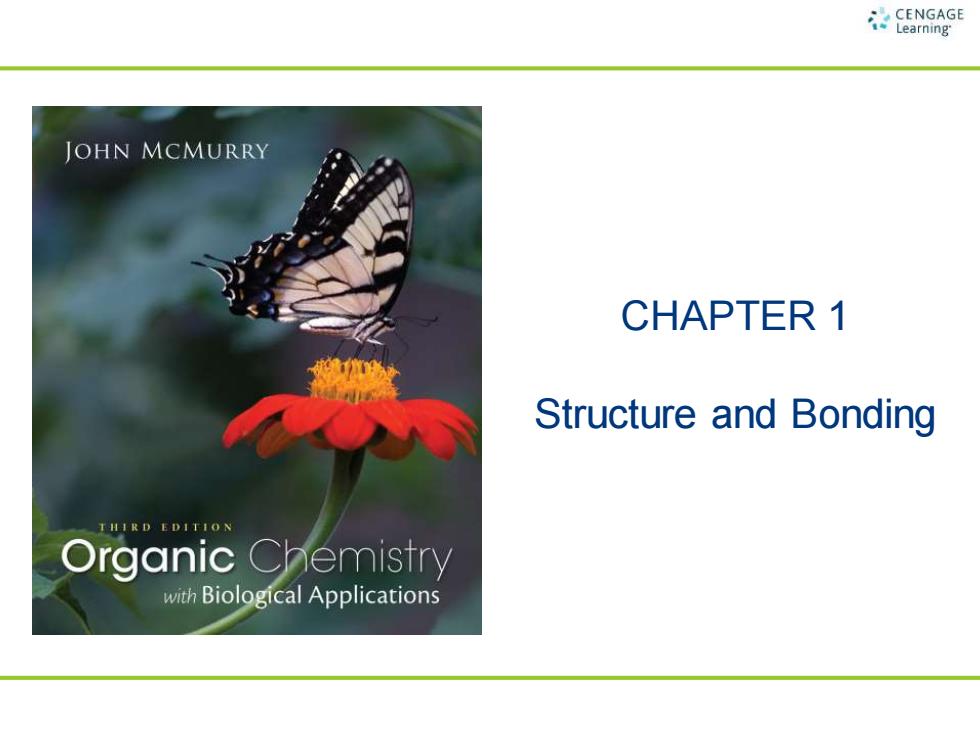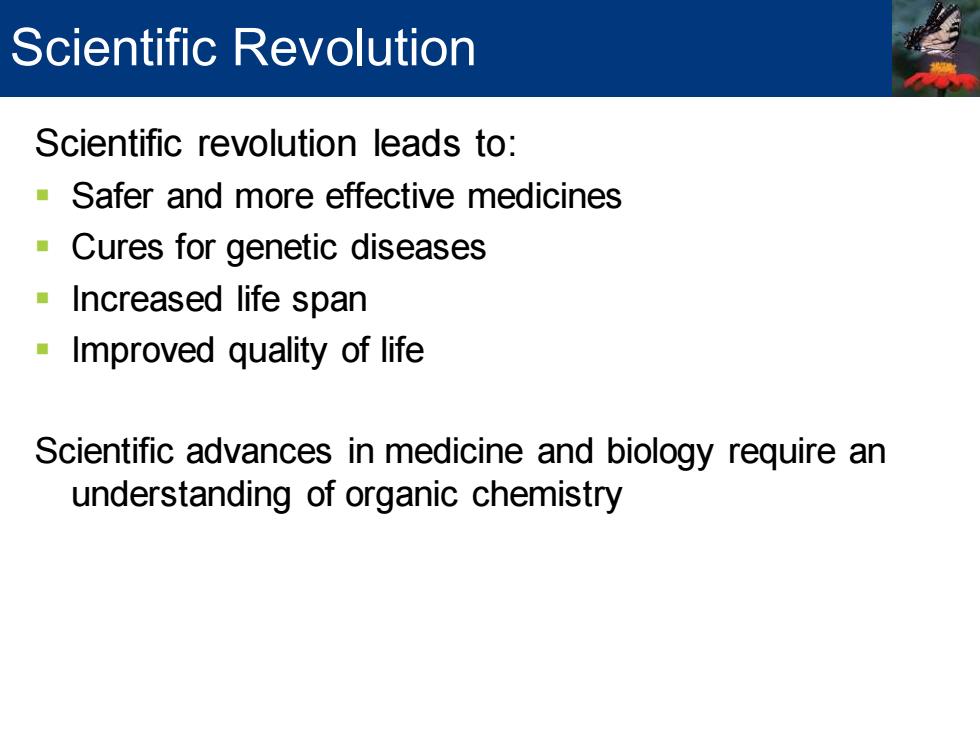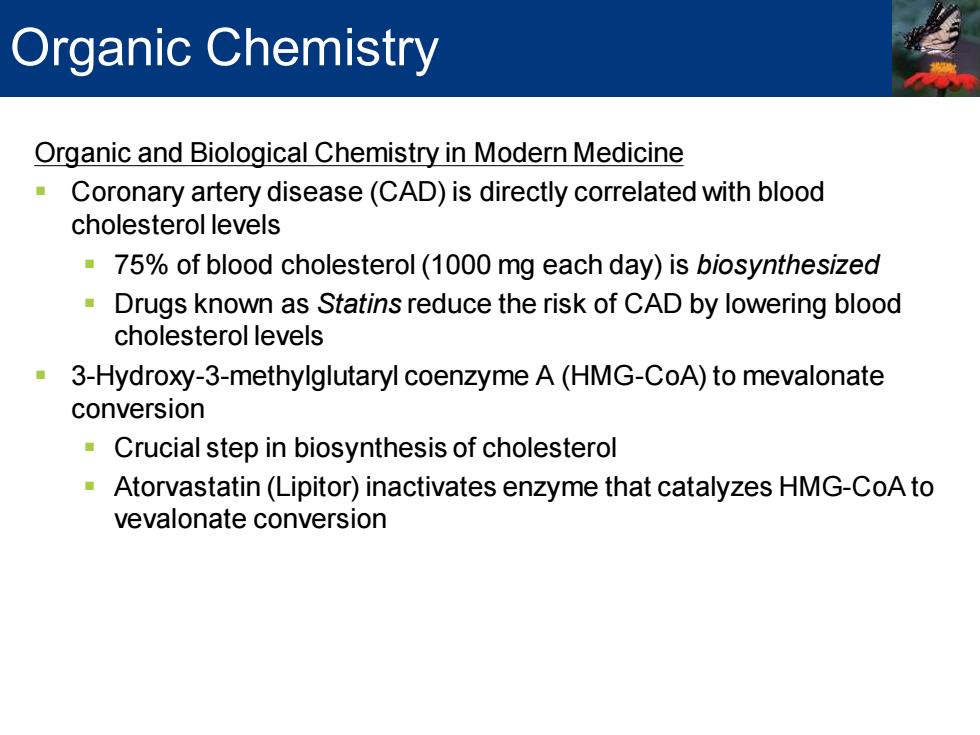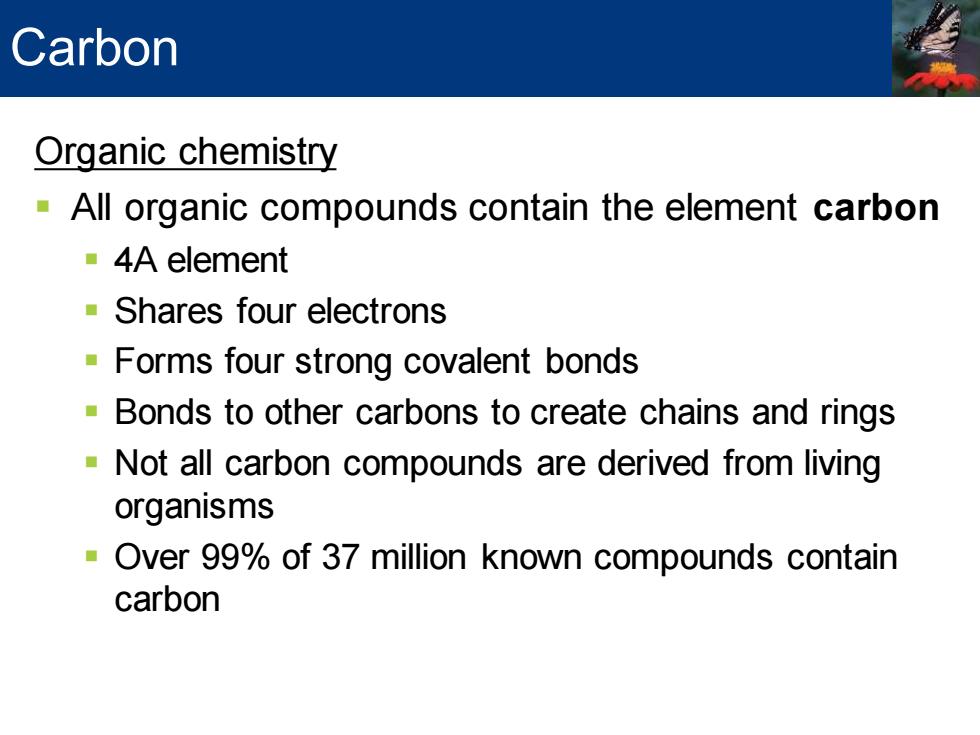
CNGNGE JOHN MCMURRY CHAPTER 1 Structure and Bonding EDITION Organic Chemistry with Biological Applications
CHAPTER 1 Structure and Bonding

Scientific Revolution Scientific revolution leads to: Safer and more effective medicines Cures for genetic diseases ■Increased life span Improved quality of life Scientific advances in medicine and biology require an understanding of organic chemistry
Scientific revolution leads to: ▪ Safer and more effective medicines ▪ Cures for genetic diseases ▪ Increased life span ▪ Improved quality of life Scientific advances in medicine and biology require an understanding of organic chemistry Scientific Revolution

Organic Chemistry Organic and Biological Chemistry in Modern Medicine 。 Coronary artery disease(CAD)is directly correlated with blood cholesterol levels 75%of blood cholesterol (1000 mg each day)is biosynthesized Drugs known as Statins reduce the risk of CAD by lowering blood cholesterol levels 3-Hydroxy-3-methylglutaryl coenzyme A(HMG-CoA)to mevalonate conversion Crucial step in biosynthesis of cholesterol Atorvastatin(Lipitor)inactivates enzyme that catalyzes HMG-CoA to vevalonate conversion
Organic and Biological Chemistry in Modern Medicine ▪ Coronary artery disease (CAD) is directly correlated with blood cholesterol levels ▪ 75% of blood cholesterol (1000 mg each day) is biosynthesized ▪ Drugs known as Statins reduce the risk of CAD by lowering blood cholesterol levels ▪ 3-Hydroxy-3-methylglutaryl coenzyme A (HMG-CoA) to mevalonate conversion ▪ Crucial step in biosynthesis of cholesterol ▪ Atorvastatin (Lipitor) inactivates enzyme that catalyzes HMG-CoA to vevalonate conversion Organic Chemistry

Organic Chemistry H3C OH H3C OH 02C C02 0 SCoA OH HO 3-Hydroxy-3-methyl- Mevalonate Cholesterol glutaryl coenzyme A (HMG-CoA) HO C02 OH H CH3 7 K739 L967 508 Atorvastatin(Lipitor)
Organic Chemistry

Carbon Organic chemistry -All organic compounds contain the element carbon 4A element Shares four electrons Forms four strong covalent bonds Bonds to other carbons to create chains and rings Not all carbon compounds are derived from living organisms -Over 99%of 37 million known compounds contain carbon
Organic chemistry ▪ All organic compounds contain the element carbon ▪ 4A element ▪ Shares four electrons ▪ Forms four strong covalent bonds ▪ Bonds to other carbons to create chains and rings ▪ Not all carbon compounds are derived from living organisms ▪ Over 99% of 37 million known compounds contain carbon Carbon